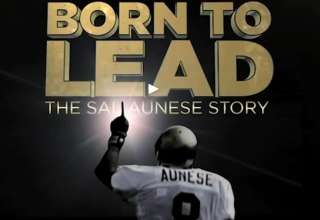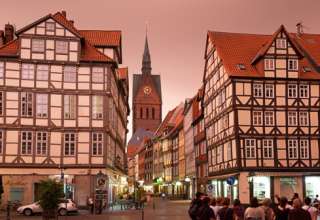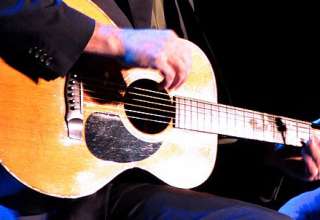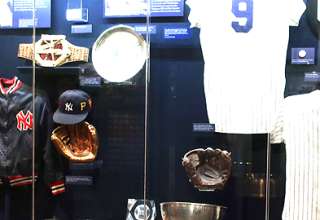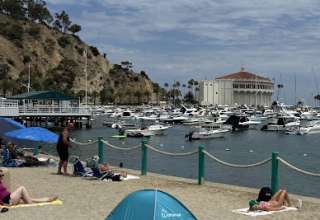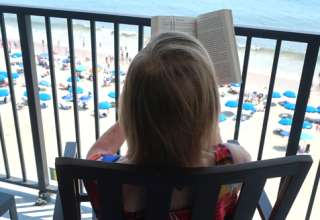
Traveling to Locations Close to Home is the theme of our latest T-Boy Society of Film, Travel & Music poll. ‘Close to Home’ can mean by foot, car, scooter, motorcycle, skateboard, drone, skis, surfboard, blimp, parasail, parachute or human cannonball. It’s always fun to see our many T-Boy writers – writers who have been regularly delivering original content that cannot be found anywhere else on the globe – address joyful, memory-filled locations, which are in their own backyard.
Susan Breslow – T-Boy Writer:
A TASTE OF NEW YORK’S LOWER EAST SIDE
More than a century ago my father was born in a tenement on the Lower East Side. On steaming summer days, he slept on the fire escape to avoid sharing the bed with his three brothers. The day before he was to graduate from junior high school, he dropped out in order to find a job before the other students. Those early years motivated him to build a life where he would work hard and pull himself up from poverty to become a wealthy man.
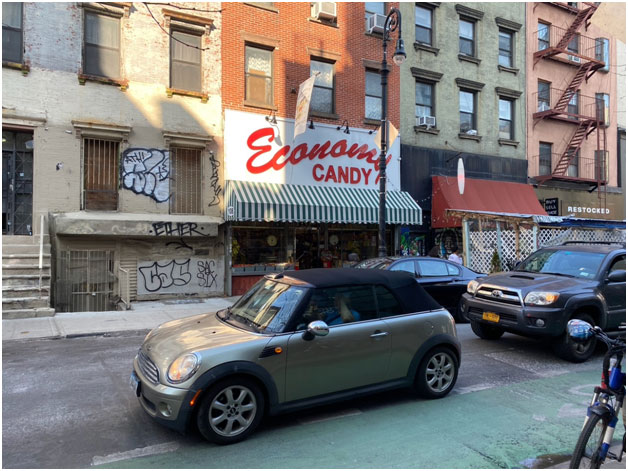
Even when my dad lived in a fine house on a hill, he would drive our family in from the suburbs to recapture a taste of his youth, which included hot pastrami sandwiches at Katz’s deli (established 1888) followed with charlotte russe, a creamy dessert now a victim of pastry obsolescence.
The Lower East Side, which stretches south from Houston (how-stun) Street to Canal Street and from the Bowery to the East River, has evolved in a century. Today six-story tenement walkups stand alongside towering new constructions. Hip hotels and galleries have moved in. And CBD purveyors have replaced shops where Hasidic merchants once sold brassieres in any size you needed… as long as they came in white.
Fortunately, vestiges of the old neighborhood’s history remain. Absorb the essence of the area by visiting the Tenement Museum. Tour guides lead visitors up narrow staircases where generations of Jewish, Irish, and Spanish immigrant families lived between 1863 and 2011 and tell their stories. The Museum also features an expertly curated bookstore on the ground level.
Directly across the street, Moscot opticians has been making eyeglasses for New Yorkers for over a century, and their line of Moscot Originals decorates the faces of some well-known celebrities.
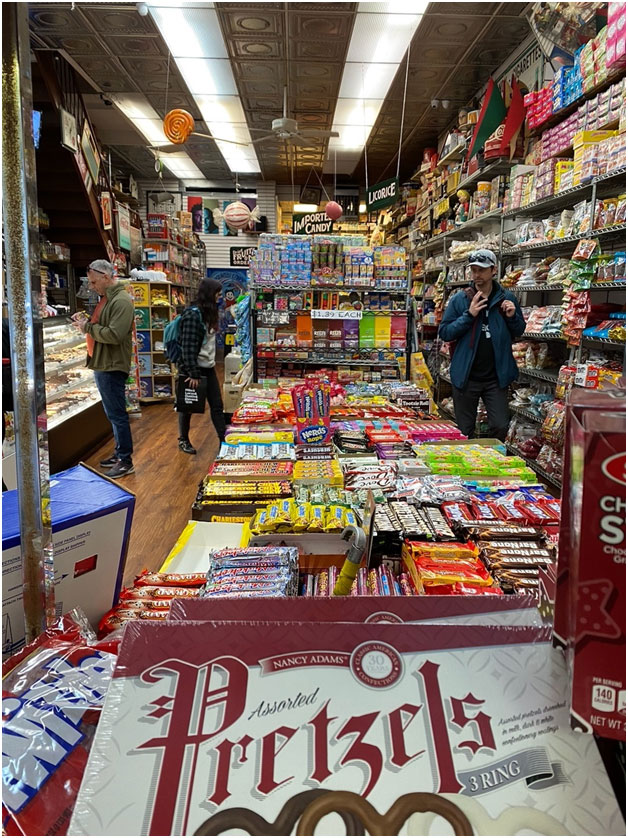
At another legacy business, Russ & Daughters (circa 1907), appetizing is a noun as well as an adjective. This is the place to order New York’s iconic bagel & paper-thin Gaspe smoked nova to go. Another delicacy: the Super Heebster, which adds a layer of wasabi roe to whitefish-and-baked-salmon salad on a bagel. The shop also has a vintage-style café close by.
Could you possibly still be hungry? Stock up on sweets at circa-1937 Economy Candy, a phantasmagorical emporium filled floor to ceiling with chocolates, gum, licorice, pastilles, jelly beans, taffy, dried fruits and nuts, imported confections, and other delights. It will send you away from the Lower East Side on a sugar high.
Fyllis Hockman – T-Boy Writer:
Washington, DC: The Planet Word Museum
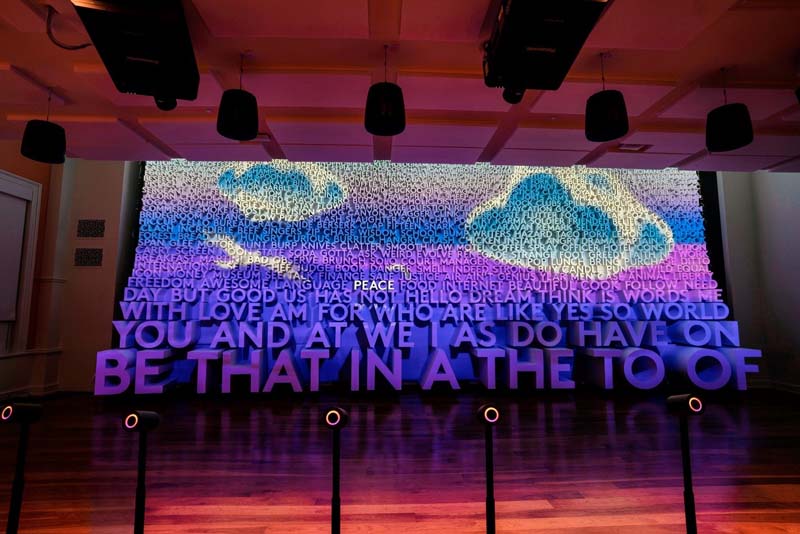
I live in a suburb of Washington, DC and I only have to go into the District itself to visit one of the most delightful and entertaining museums I’ve ever been to – and I’ve been to a lot. The Planet Word Museum, “Where language comes to life,” portrays all the magical ways in which words can be employed in their myriad maneuverings to explain, entertain and elucidate. Interactive exhibits that talk, teach, train and titillate.
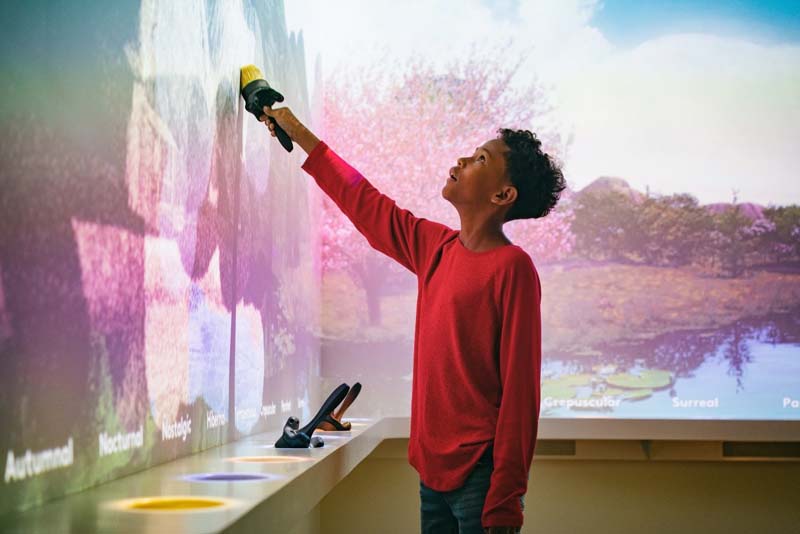
Photograph courtesy of Planet World.
The museum is divided into the foundations of language; all the cool things you can do with words, and ultimately why words matter. Nine different galleries amuse, amaze and astonish.
I left the museum with a smile on my face, thinking to myself: What a wonderful place! Four little words. One declarative sentence. And yet it says so much. Words are funny that way…
Ringo Boitano – T-Boy Writer:
The Seattle Center International Fountain
In my early college days at the U-Dub (University of Washington), I resided in a Lower Queen Anne Hill apartment four blocks from the Seattle Center, the former site of the 1962 World’s Fair. Many of the Center’s arenas, halls, concert venues were repurposed, while the remaining iconic structures such as the Space Needle, the Seattle Center Coliseum and the Pacific Science Pavilions still stand strong today.
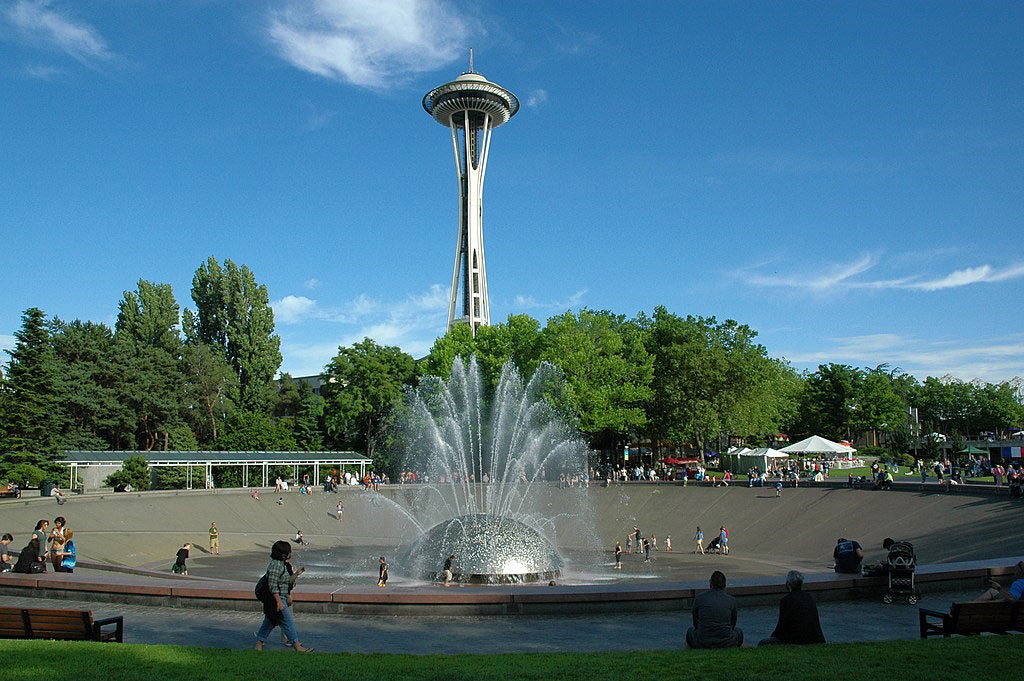
With that said, and with apologies to Vancouver BC’s Stanley Park, the Seattle Center is my pick for the greatest urban park in North America. My experiences in Mexico City’s many sublime parks have been too brief for me to comment. But, no, Mister Trump; Mexico is not a nation of drug dealers, rapist and murders, but home to the most hospitable people in the world.
But the spot, the very spot where I spent countless late afternoons in the spring, summer and fall, was a spot where I sat on the upper circular concrete bench, overlooking the Seattle Center Fountain (International Fountain). Gazing into the fountain’s shower of water, often colorized by different shades of electric light, proved to be my place to relax, to decompress and to access my current station in life; often leading to meditative daydreams and the cleansing of my soul.
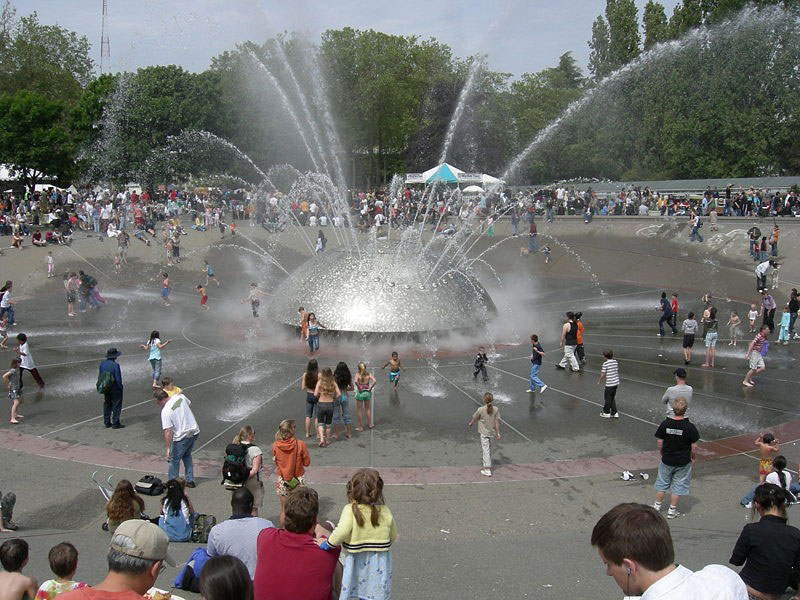
My thoughts would often give way to watching children’s games, where the kids would carefully sneak down the round concrete hill to get as close to the fountain’s spraying water without getting wet. The groups on the bench became a communion of one, watching and laughing good naturedly at the kids who got soaked and applauding the ones that didn’t.
I’m really not sure if I could have made it through my college years without the Seattle Center Fountain. I should add that my roommate at the time was my brother, Ed Boitano, also a frequent fountain attendee. He spent his early college years at Seattle Central Community College with grades too low to enroll in the U-Dub. He finally got his act together – “finally” a life-long personal trait – and then was transformed by films at the U-Dub’s Cinema Studies Program. He became so enamored by film theory that it became virtually impossible for us to just have a simple chat about a movie. BTW, T-Boy readers, do not ever mention the titles: ‘Braveheart’ or ‘Die Hard’ to Ed, for you’ll experience a savage diatribe that will shake you to your very soul. But we continue to work happily together on (his) travel website, despite the constant outburst: “I made you, Ringo!”
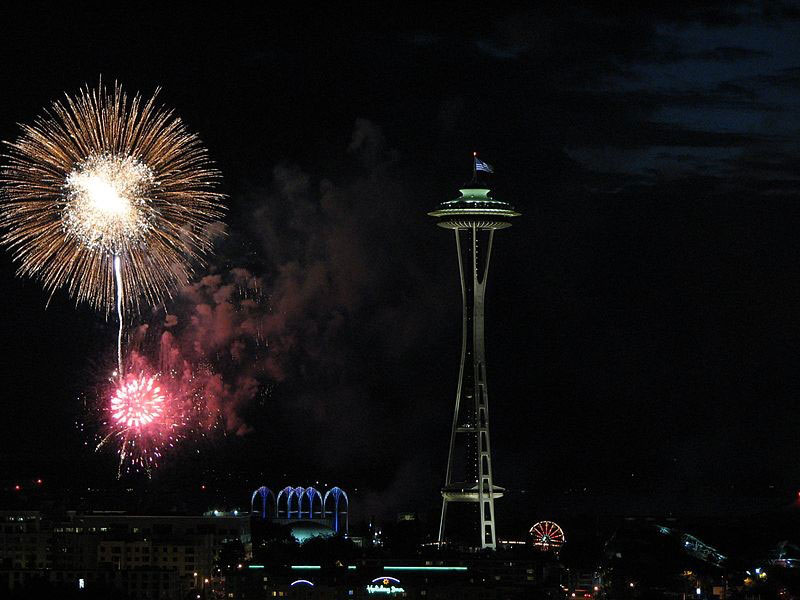
Ed’s preference for his time at the fountain was when the sun was low and the people were few. I would occasionally notice him, often times in conversation with someone a few generations older. I once asked him “What do you talk about?” He replied that an older person would sit a polite distance away, and then engage him in gentle conversation. “Like what, Ed?” Well, it can be why I have long hair and why I am a “Hippie.” But it was not said in outrage or condemnation, for many elderly people are lonely and pretty much out of the loop when it comes to contemporary social culture. I would always try to oblige, well aware that their loved ones might have passed away and the person might be desperately alone in the world. The next stage is the person discussing his own narrative which can be happy or sad. It works for both of us for we learn about each other and ultimately have a better understanding of our place in the world.
I recall that Ed’s favorite track on the Simon and Garfunkel “Bookends” LP was “Old Friends.” He would often say, “I can sing a few lines if you like.” “Another time, Ed,” was my reply… “I’ll call you.”
James Boitano – T-Boy Writer:
Two Sides of the Same State
My home city of Seattle is legendarily rainy. I think the amount of rain is a bit exaggerated: it may rain more in New York and Memphis, but Seattle has a lot of gray and cloudy days. We are smothered more in drizzle than in downpours. While we may have nearly constantly sunny skies from June to September, it’s quite the opposite from October to May. During the ‘gray months of the year’ it can feel like weeks go by without seeing the sun.
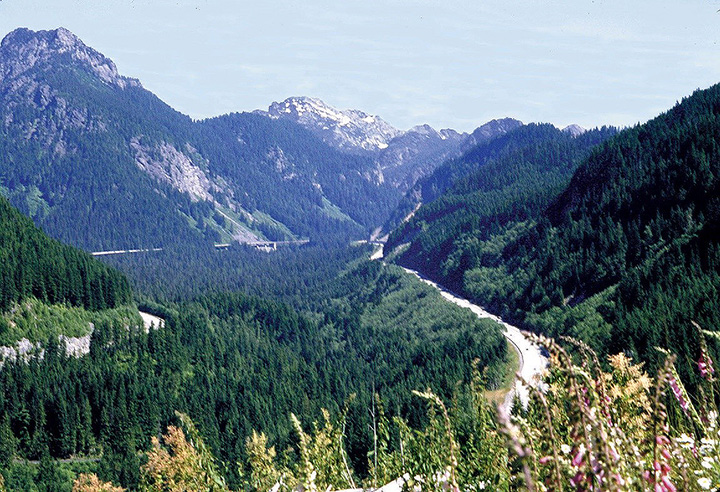
The remedy is the state’s geography. For lapping at Seattle’s eastern suburbs begin the majestic coastal range, the Cascades, a string of picturesque, conical shaped volcanoes, the most famous of which is Mount Rainier. The mountains catch the clouds as they drift from the Pacific Ocean to the West over Seattle to the East. They also trap the moisture, and thus right on the other side of these mountains we find the arid paradise of the central and eastern part of the state. In just an hour you are on the top of Snoqualmie Pass.
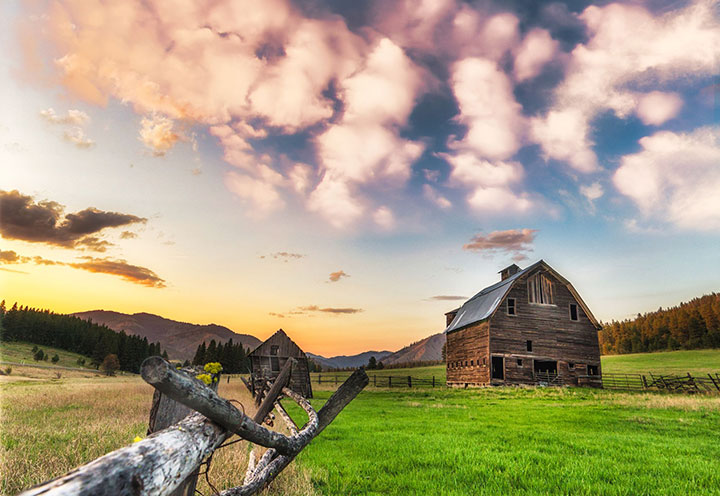
Photograph courtesy of Mountains to Sound Greenway Trust via Wikimedia Commons.
And as soon as you cross this magical divide, you are in a different world. The liberal world of Seattle is replaced by a more traditional, agricultural land, where you are more likely to hear country or Mexican music or see political signs for the red side of the spectrum. Fields of hay, pastures of cattle, and skies of blue greet you. Yes, skies of blue. What a blessing.
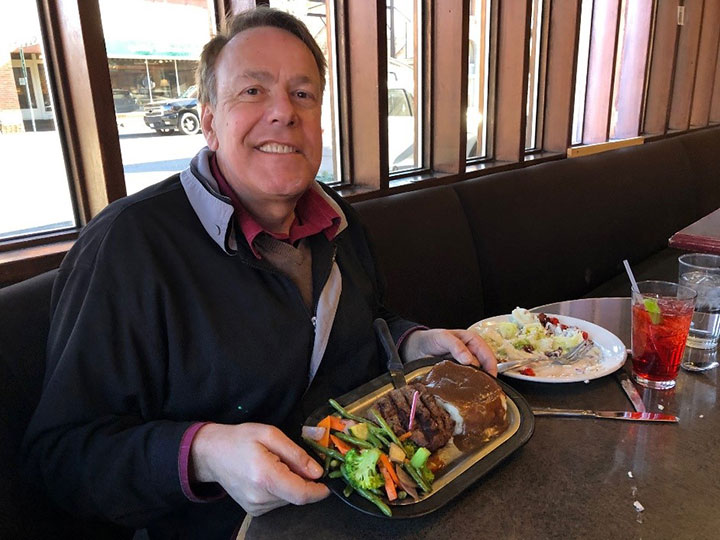
So, ok. It’s not Paris. But it is Ellensburg. The drive over the pass and through the golden farmlands is a good way to clear your mind. And you can be sure that there is plenty of authentic Mexican Food and local steaks for lunch to fuel you before your drive back
Phil Morley – T-Boy Writer and Poet:
Seattle’s Green Lake
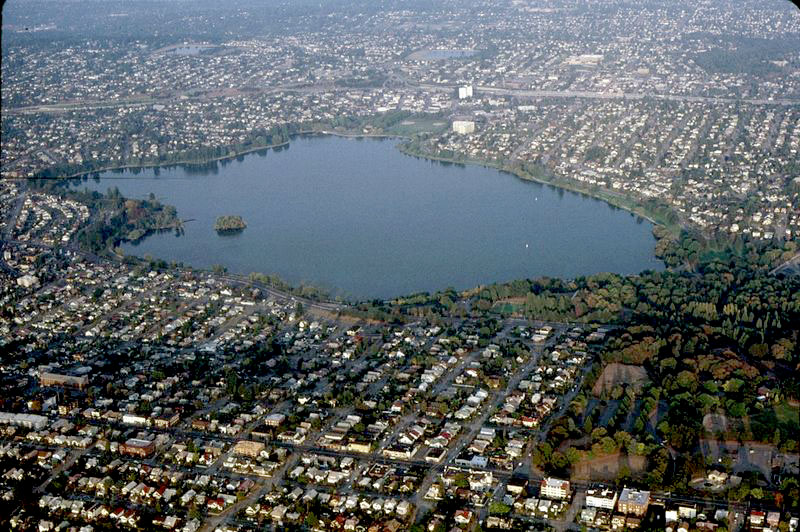
Though born in Montreal, my growing years were spent in my family home on the north side of Seattle’s Queen Anne Hill. My father was a British expat, who worked a graveyard shift as a security guard at the 50-story Bank Building (now Safeco Plaza) in downtown Seattle. Standing at 630 feet, it was Seattle’s tallest building (today the 7th), and in 1969 it was considered a bit of an eyesore. Never-the-less, we were quite proud of our father to work in such a state-of-the-art building. He was a product of the English working class, with minimal schooling and even less opportunities for the future. He plowed his trade as a boxer, and later joined the Canadian Merchant Navy. How and why Canada? I fear I’ll never know. There are many questions I had wished to ask him before his recent passing at age 91. But the stint in the navy proved to be a positive pathway in his life’s odyssey, where he married a fourteen-year-old Canadian farm girl who would become my mother.
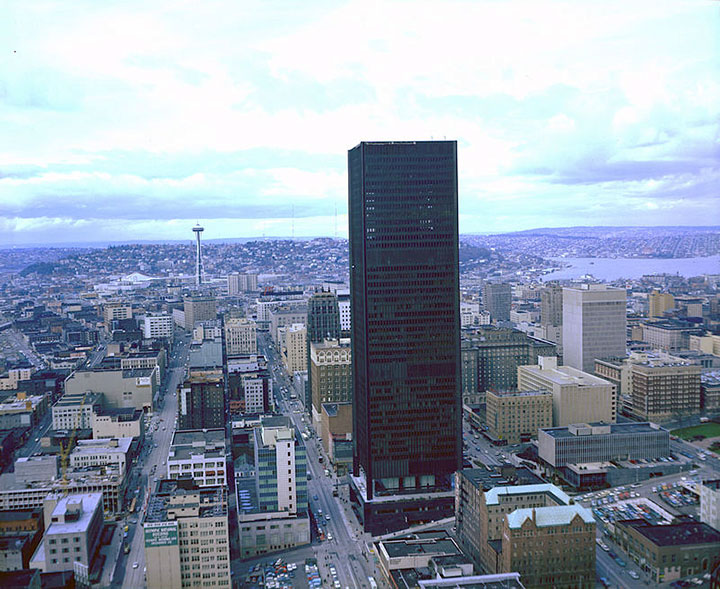
Like clockwork, during the Seattle summers at 6 a.m. – with “clockwork,” the very definition of the security guards’ job – my father would pick up my mother, brother and yours truly, and drive three or four miles away to a sacred destination. Though still a bit on the sleepy side, my eyes would soon be wide open upon our arrival at Seattle’s north-central Green Lake District. It was never too early for us to take a dip in the crisp, fresh water, for we considered ourselves lucky to have the entire lake to ourselves.
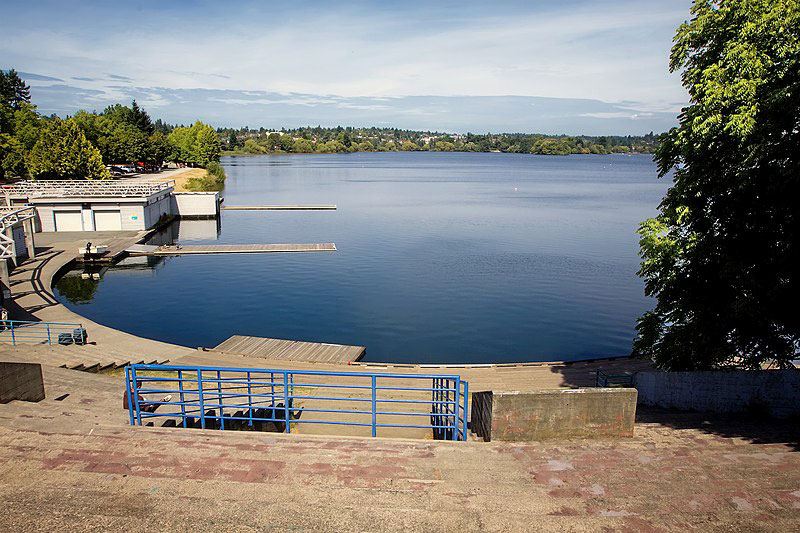
Photograph courtesy of Steve Pavlov via Wikimedia Commons.
Its unique color was due to blooming green algae that covered the 259-acreage surfaced lake. And we adored our early morning treks to the lake with barely a soul around. It was where I learned to swim, which eventually led to performing various dives from the dock in complete privacy, sans a stranger’s discouraging eyes. We would return home refreshed and alive, and I would commence my early morning job as a paperboy for the Seattle P.I.
Occasionally, I would stroll back to the lake in the afternoon (often hitchhiking, with never a word to me mum) and bump into Mr. Ed Boitano. My parents referred to him as “The Hippy.” Despite my parents’ objections, a year or so later, I too grew my hair out in long golden stands. And, with the addition of a pair of imitation John Lennon government issued wire-rimmed glasses, my hipness was confirmed.
It was at Green Lake where Ed overcame his fear of water, and eventually learned to swim, but it did take a little time. Even today it’s not a pretty picture watching his clumsy brush strokes in a swimming pool. During his adolescence, he even had a preference for the safety of the children’s wading pool, where its deepest waters could barely touch his waist.
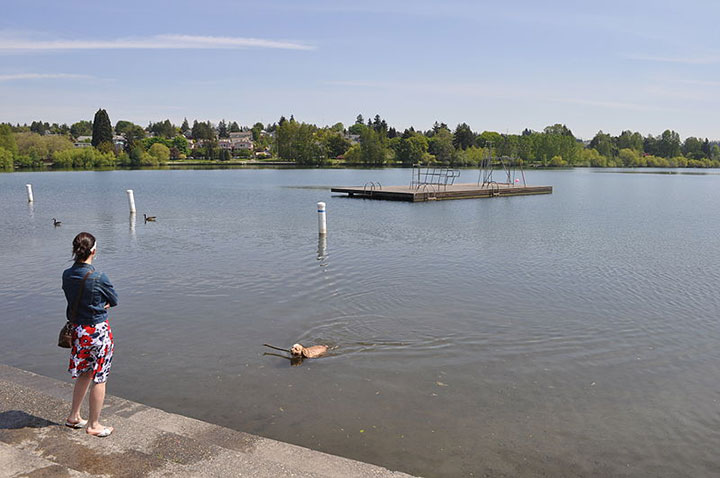
Photography courtesy of Joe Mabe via Wikimedia Commons.
Ed eventually became hopelessly addicted to the movies (which he would pretentiously refer to as “The Cine-Mah.” In particular, it was the films of Bresson, Godard and Ozu that really got him going. Ed transitioned to film making and went on to make a few award-winning films in Seattle until bailing for the bright lights of Hollywood. I know he stuck at it and worked a number of struggling artist jobs (his words), including a graveyard security guard gig at the home of Charles Bronson. He’d write screenplays all night using Bronson’s on-site manager’s office as his own, leaving his days open for meetings and waiting for the proverbial phone call that rarely came. Once, he told me, he was so focused on writing a script that he never even noticed a blaring security alarm. Apparently, the solemn Bronson seemed to like him, but Ed eventually slipped into an entry level newspaper job – plus the guy could barely keep his eyes open during the day – and it became a career that led to his tenure of travel editor of Traveling Boy and other magazines and newspapers. Somewhere in his narrative he met an enchanting woman, also an expat from Washington State, named Deb Roskamp. Somehow, he managed to trick her into marrying him – no one really knows how – and she has stood beside him in failure and success. Even including a love for his battered 1969 Dodge Dart which had difficulties starting.
Ed Boitano- T-Boy Editor:
The Hiram M. Chittenden Locks in Seattle
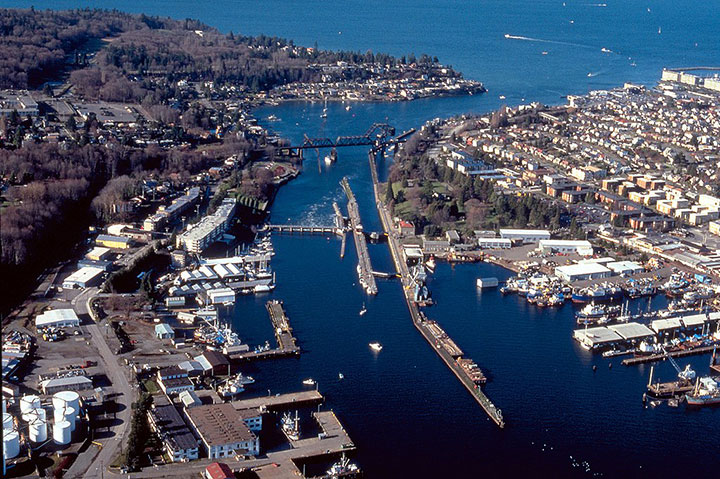
To many it’s referred to as the “Ballard Locks,” but to me it has always been “The Locks.” No one ever told me how famous they were: listed on the National Register of Historic Places since 1917 and designated by the American Society of Civil Engineers as a National Historic Civil Engineering Landmark. The Lock’s construction dramatically reshaped the topography of Seattle, lowering the freshwater level of Lake Washington and Lake Union by 8.8 feet, adding miles of new waterfront land, reversing the flow of rivers, constituting a rebirth of the piers in Seattle’s Salmon Bay and Fishermen’s Terminal, allowing an easy waterway for shipping throughout the seawater world. The Locks maintained the freshwater level of Lake Washington and Lake Union at roughly 22 feet above sea level to meet Puget Sound’s mean low tide, with help from man-made dredged canals, known as the Fremont and Montlake Cuts, which united all waterways. Today, almost 50,000 vessels lock through the Hiram M. Chittenden, with many part of the Alaskan fishing fleet.
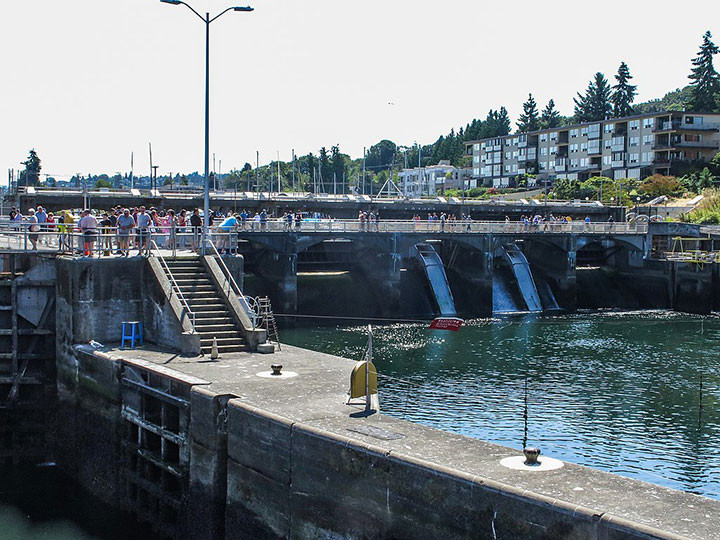
Photograph courtesy of Burley Packwood via Wikimedia Commons.
A walk to the locks served as my own personal easy mile-long stroll from my childhood home in Seattle’s Magnolia District. I stress Magnolia for the connective locks between Lake Washington’s fresh water and the seawater of Puget Sound have two land entrances: the Ballard District in the north and Magnolia in the south. Though Ballard is the ‘official’ pathway, complete with the surrounding Carl S. English Jr. Botanical Gardens, Magnolians take pride in the fish ladder (salmon) and a rather murky aquarium and small museum on their side. Most importantly, each side features an enchanting, rolling downhill green lawn, designed with well-maintained horizontal terraces, overlooking the busiest locking system in the nation.
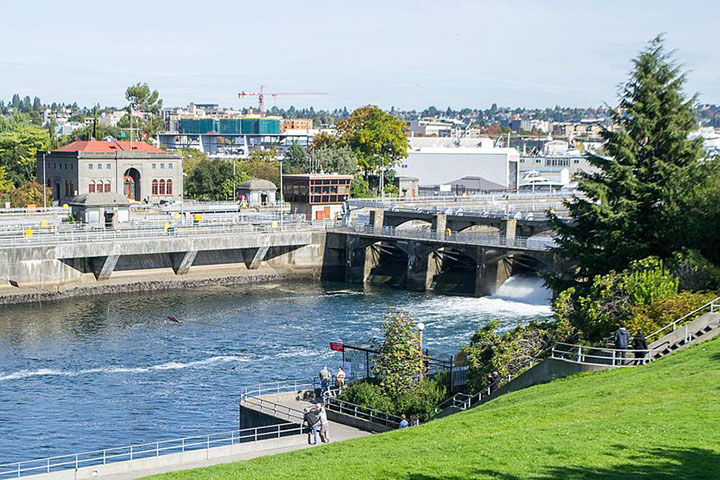
Photography courtesy of Visitor 7 via Wikimedia Commons.
Sitting on one of the green terraces, watching more boat traffic than in any other lock system in the U.S., always proved to be a redemptive rest of disconnection, a disconnection from my own busy life. Later in life, as I traversed throughout the world, I found my self-proclaimed “busy life,” a mere charade in comparison to those whose hectic life meant finding enough food to be served at the table.
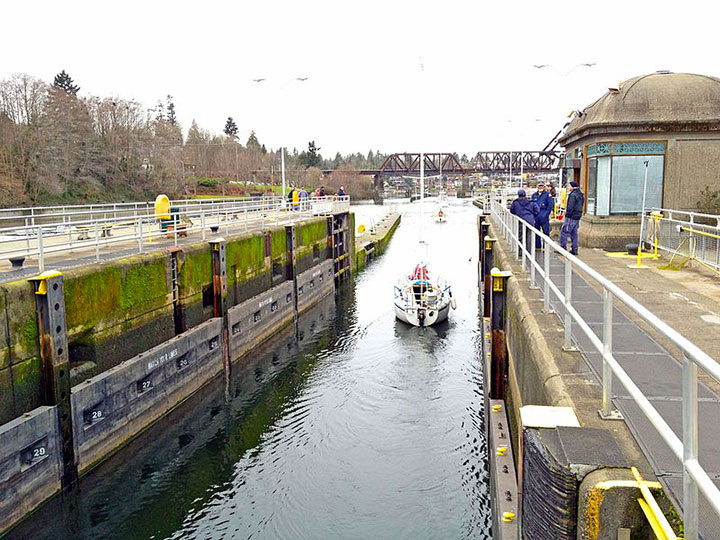
Photography courtesy of David Broadvia Wikimedia Commons.
Back at the Locks, it was always fun to see the passengers on the small or grand pleasure boats, who were participants in the lock’s process; catching, tying and throwing ropes up to the Lock’s employees above them, which completes the final task of merging the water levels. As jocular adolescents, we would often mock and laugh at the wealthy owners of palatial mega pleasure boats due to their clumsiness with the ropes and struggling to follow the strict commands of the Hiram M. Chittenden Locks’ employees, whose no nonsense task was to keep things safe and rolling. Yes, it was a well-deserved laugh. After all, where else can you verbally assault an assumed multimillionaire or CEO without negative ramifications, that is, besides a sporting venue.
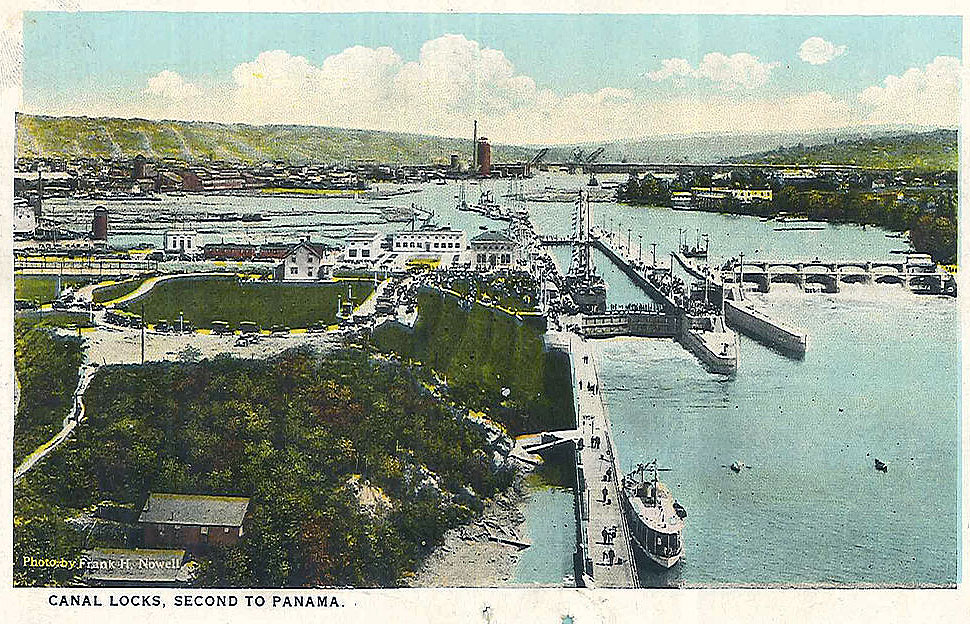

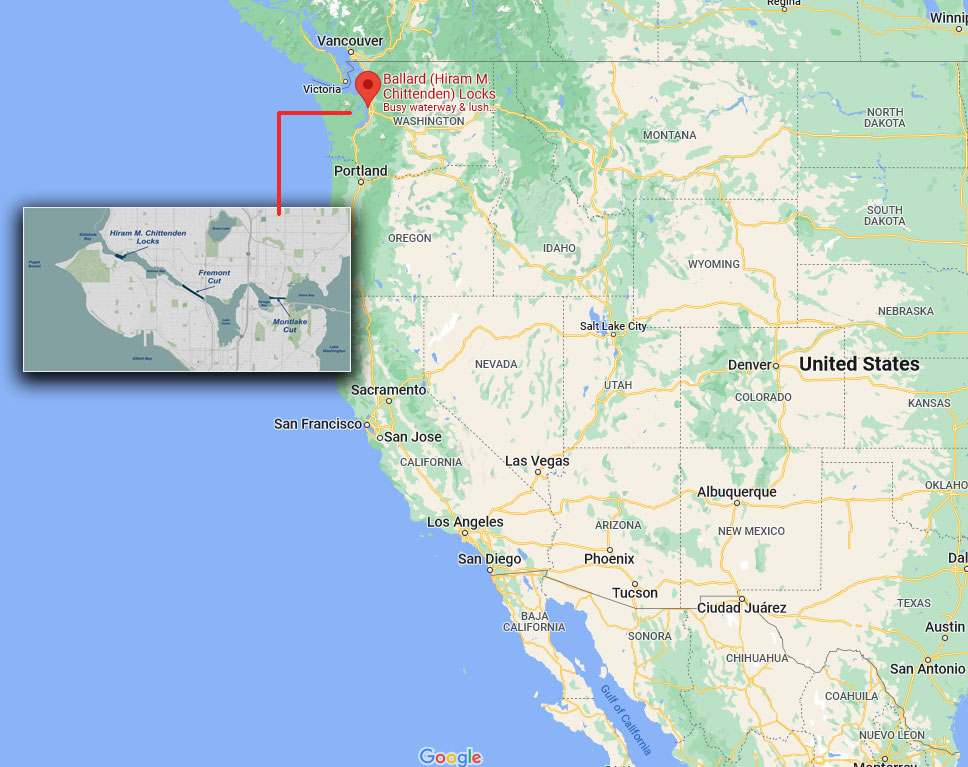
Further thoughts from Ed Boitano: Mr. Morely, please avoid the use of “Ed Boitano” in your segment. I can get through it myself. But some of your comments were vastly incorrect. I actually learned the Dead Mans’ Float at Golden Gardens on Shilshole Bay. I only traveled to Green Lake due to the Golden Garden’s rough terrain of pebbles and rocks mixed into the sand, which warranted my wearing a pair of battered tennis shoes in the water. Plus, when I huffed and puffed back to the shore after completing a particularly challenging Dead Mans’ Float, my body from head to toe would be wrapped in seaweed, which produced both laughter and alarm among other beach goers. The laughter and alarm also included my own, upon looking at my reflection in the beach lavatory mirror.
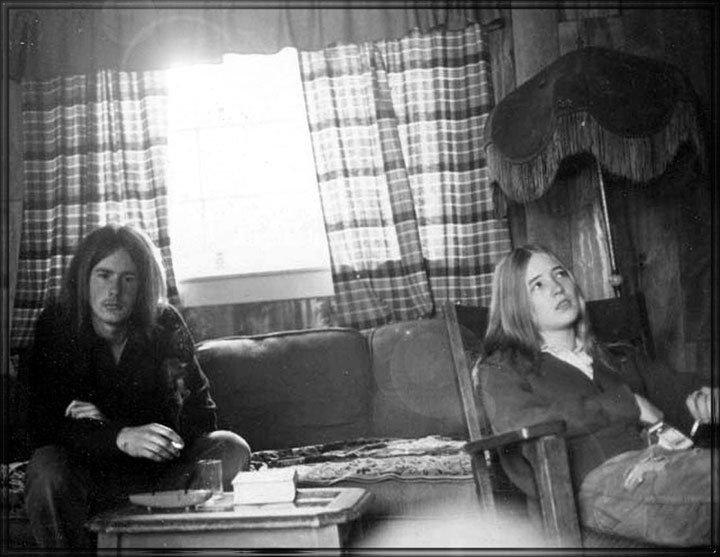
Photograph courtesy of Allan T. Smith.
And younger brother, Ringo Boitano, I found it interesting that you never mentioned our little band of 12-year-olds, when we’d take the elevator ride at night to the top of Seattle Center’s Space Needle observation desk to smoke cigarettes and drink bad vending machine hot chocolate. We’d do it almost every Friday or Saturday night after attending a Totem’s hockey game at the Seattle Center Coliseum. Cold, wet and windy; we’d have the observation deck to ourselves, the only people stupid enough to suffer through the evening’s challenging weather. Just before we approached the Needle’s admission desk, we would make Paul dress like a ten-year old, and buy six or so individual tickets for the whole gang, as we hid behind a nearby building. It was a big savings for us, bringing the cost down to 50 cents per person, opposed to one dollar. Also, and please take no offense, Ringo, for I do try to love you the best I can… but I’ve often wondered if you really are my brother.
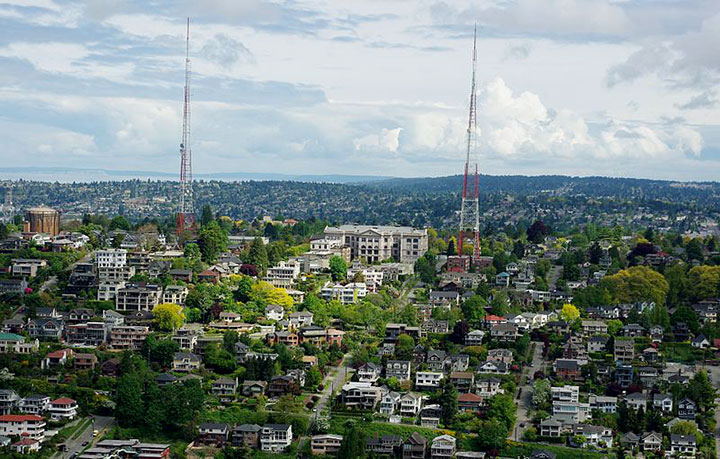
The alumni included T-Boy’s Allan T. Smith; Phil Morely; Brom Wikstrom; James, Ringo & Ed Boitano; as well as the alumna, Missy Hart. Photograph courtesy of M.O. Stevens via Wikimedia Commons.
Tony Chisholm – T-Boy Writer
Canada’s Niagara
Where to start talking about one of the great wonders of the world. Very recently the Province of Ontario has lifted almost all covid restrictions and Niagara is welcoming back its many American friends. It’s definitely open for business and new attractions have been added in the past few years. But first, what about the falls themselves.
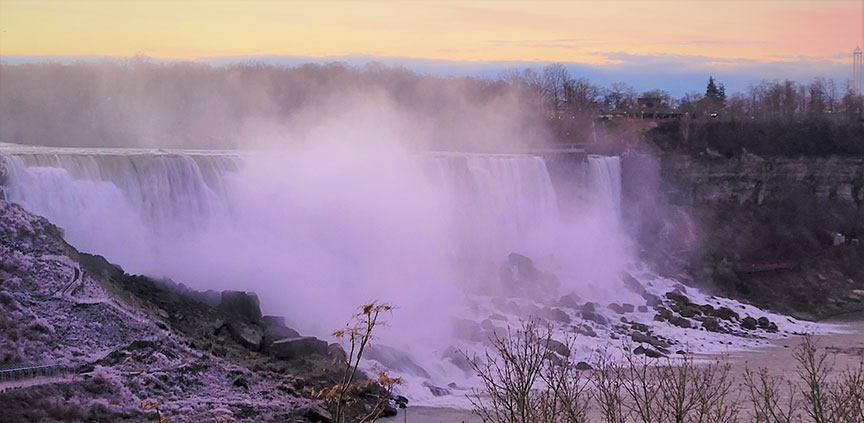
The Canadian “Horseshoe” Falls are 167 feet high or 50.9 meters. The volume of water over the horseshoe is 600,000 U.S. gallons or 2,271,247 liters per second. Yes, per second and that doesn’t include the volume at the American Falls! Twenty percent of all the fresh water in the world lies in the Upper Great Lakes. All this water flows over the falls on its way to the ocean. The theory is that it takes over 300 years for a drop of water to flow from the far end of Lake Superior, through all the lakes and the St Lawrence River, out to the ocean. (See the falls live on webcam https://www.niagarafallslive.com )
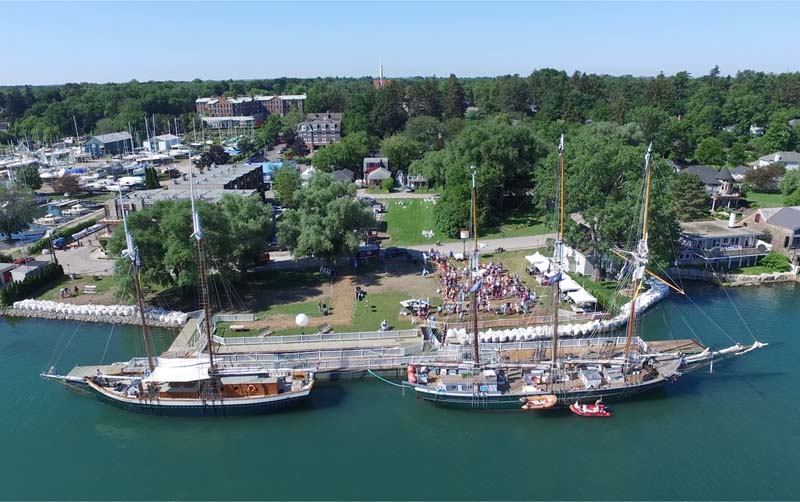
There is so much to do and see on the Canadian side of “The Falls” while you save money with the Canadian dollar being about 20% less in value. But let’s just touch on the latest attraction. Niagara Parks has opened up the spectacular original “Niagara Power Station” to the public. The station was built in 1905 and generated power for over 100 years. Now, just a few years after its turbines were shut down, the wonder of this hydro power pioneer has become an entertaining and educational experience. This engineering marvel is now open to the public and is full of interactive exhibits and repurposed artifacts in a unique architectural structure. Since its opening a year ago it has proven very popular and has gleaned a number of impressive awards.
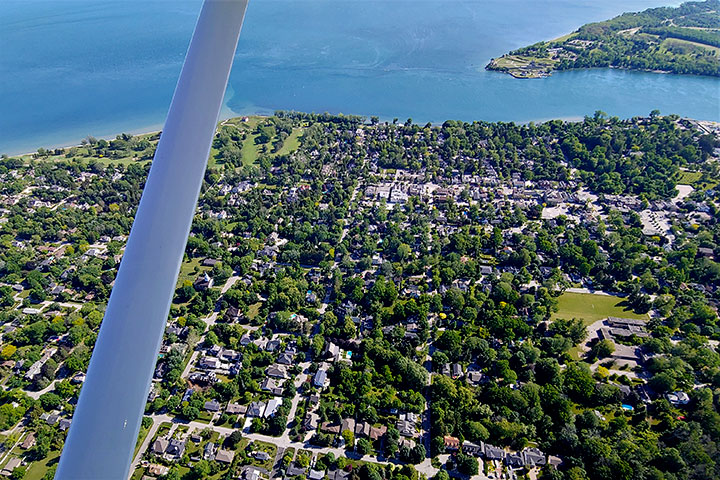
Then there is beautiful Niagara-on-the-Lake just a 20-minute picturesque drive from the iconic Niagara Falls! This is where I live and every day enjoy the rich history and beautiful landscapes. Our town is also known as the “prettiest little town” in Canada. True to our heritage, the streets and parks remain full of amazing gardens, historical markers, parks and trails. Nestled at the base of the Niagara River we can see Fort Niagara on the US side from our shore. Fort George is open all year for you to explore a soldier’s life in 1813. Fort Mississauga is nestled in the middle of the NOTL Golf Club. The geographic region lends itself well to soft fruit growing so in the summer come join us for anyone of our festivals celebrating fresh picked strawberries, cherries or peaches! In addition, we are lucky to have many fabulous restaurants and summer music festivals. For its size, it is one of the richest cultural areas in all of Canada.
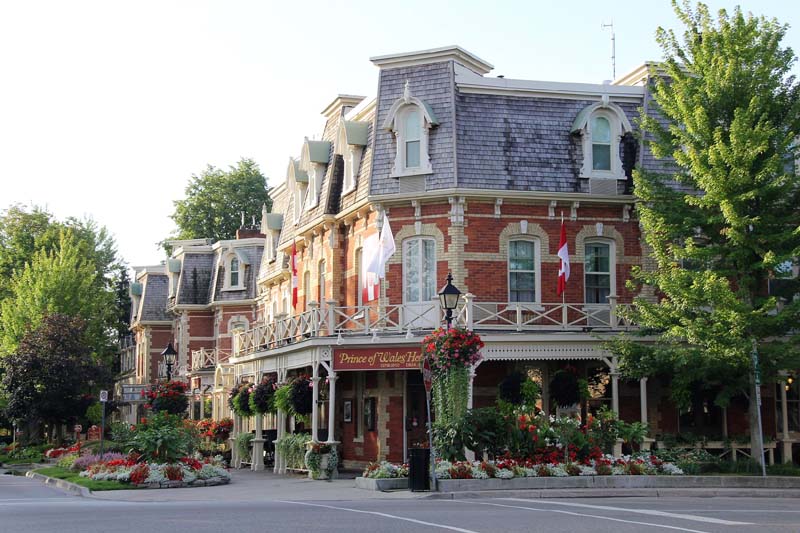
Shaw Festival Theatre is North America’s largest repertoire theatre. From April to December enjoy one of the many world class productions from musicals to dramas, to comedies, you are sure to be entertained in one of their three theaters!
Our region is definitely known for a lot of things including its parks and trails systems. The sailing club has its regular races that makes the sunsets over Lake Ontario even more picturesque! Biking is just pure joy for the novice or the hardcore cyclist, this area has beautiful vistas and miles of relatively flat trails, or rides up the Niagara Escarpment, sure to make you feel the burn! The 900-kilometer-long Bruce Trail which follows the Niagara escarpment, starts in the nearby village of Queenston.
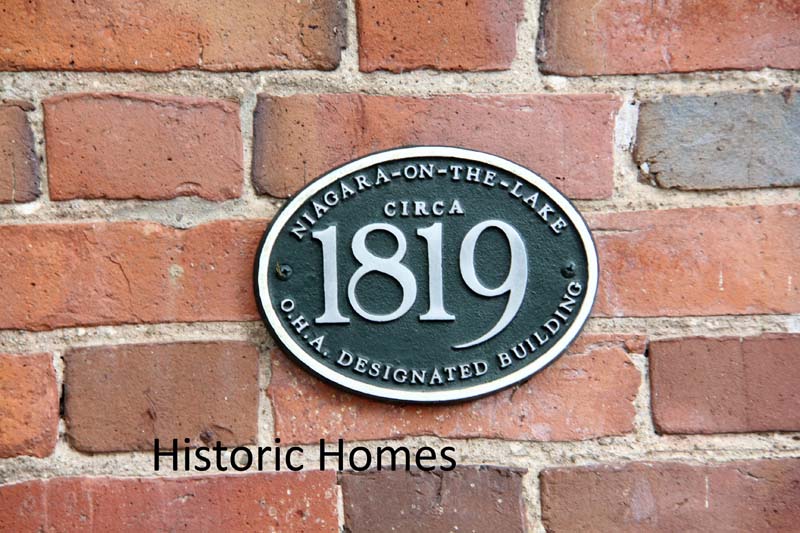
I would be remiss if I didn’t talk about wine. While our region has about 100 wineries, we think our town has 30 of the best Canada has to offer. Ravine Winery won top 10 winery restaurant in the world in 2013. Inniskiln, under the careful mastery of Karl Kaiser, resurrected the craft of Ice Wine making, the grapes are picked by hand on only the coldest nights of the year! This sweet nectar is a superb gift to your palate! Not a wine drinker? Then come see us because we have brew pubs too! Silversmith, Oast Breweries and the Exchange Brewery, along with many others, have very successfully launched their breweries in the past few years.
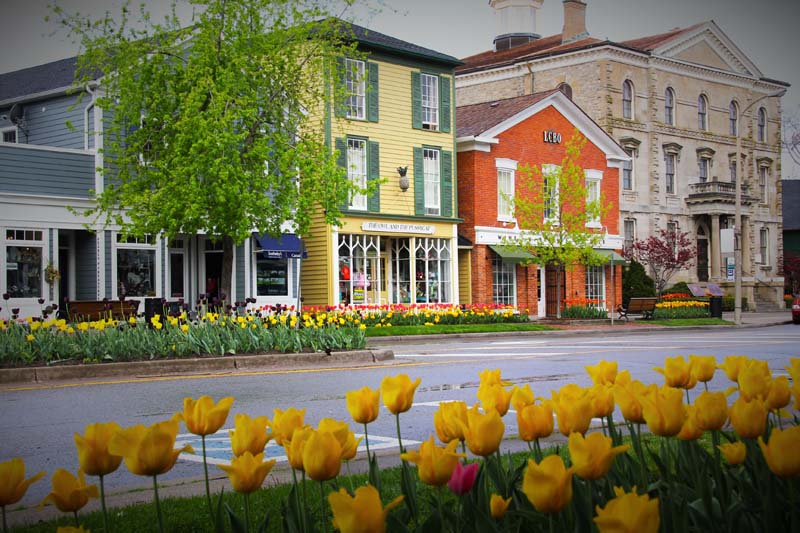
Our town offers quaint shops, bakeries, many great restaurants, pubs, galleries and a grocer all within a short stroll of your vacation home or unique hotel room. You can book a tour, find a guide for a customized day of exploration or do a self-guided tour through our region. Niagara is within a day’s drive of New York, Ottawa, Pittsburgh, Baltimore… so come see us! Don’t like to drive? Buffalo airport is just 30 miles away!! Yes, Niagara is close to home.


